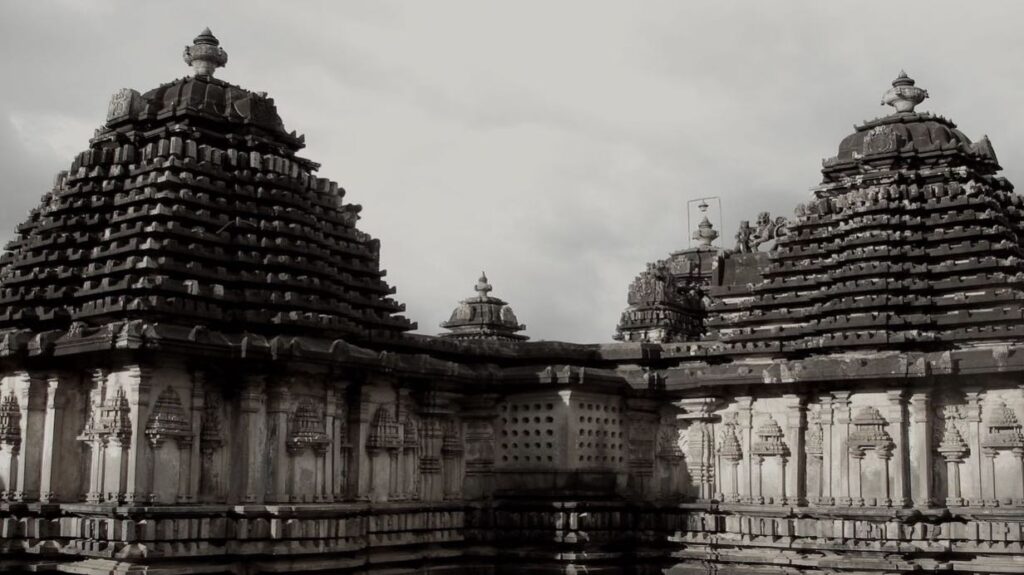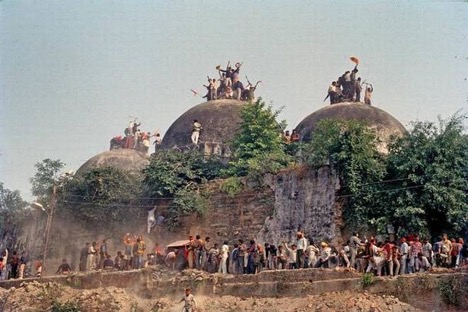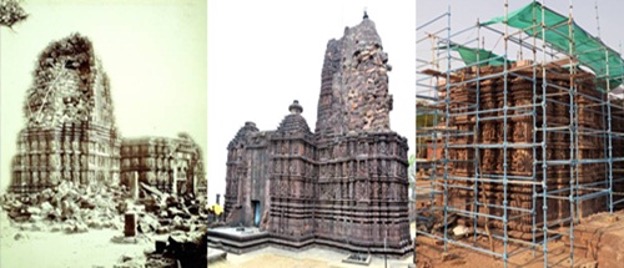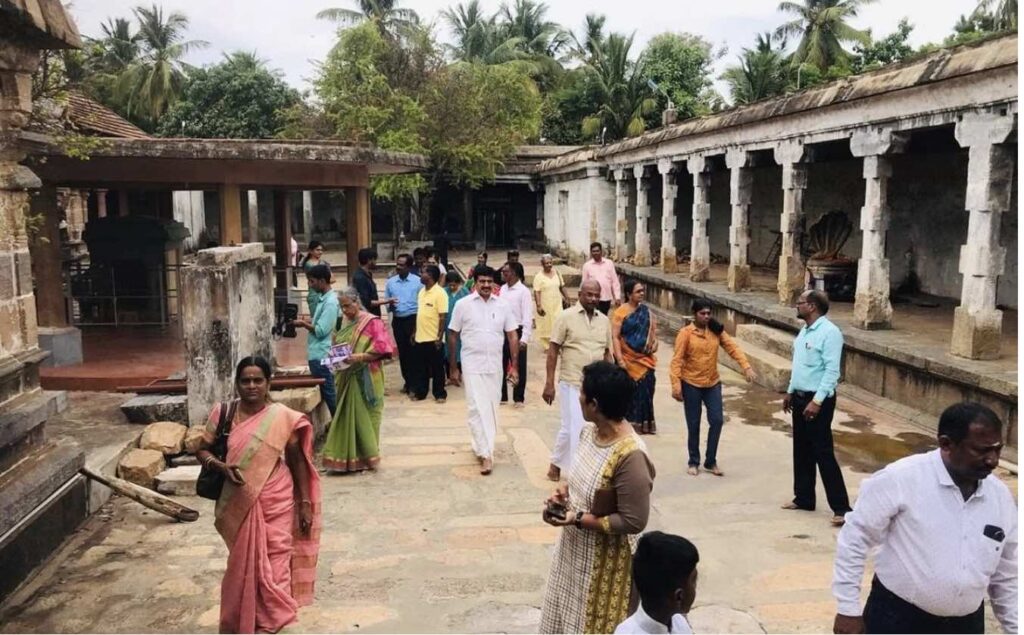Temples in Ancient India
Even before India was established by its name and current borders, it has been the land of spirituality and glorious temples throughout history. Through the many leaders that changed hands over the land of Hind, as it was known then, its temples have been targeted ferociously. Temples were not only important places for religious worship, but also served as centers for learning, arts, community gatherings, and festivals. The temples symbolized great wealth and was the pride of the community in which it was built.
Over the years, the warfare in the nation resulted in the damage and neglect of many temples leaving the society in disarray and very little for the next generation to inherit. The symbol of power, peace and prosperity that these sanctuaries had held, diminished before the eyes of the country. The last major known destruction of temple property was seen during the reign of the Mughal Emperors in India.

Modern-day effort
Seventy-five years after independence in 1947, a new India is emerging under the Narendra Modi government, which has great respect for India’s enduring civilization and its diverse traditions. It is to be believed there is a renewed interest in temple restoration as part of a national cultural awakening. Under this great initiative, legacies include numerous temples across the country, from Kanyakumari to Kedarnath, Kamakya to Somnath, which the Prime Minister has visited and assisted in the process to flourish again.
Reconstructions we are witnessing nationwide
A prominent example of temple reconstruction in India is the ongoing Kasi Vishwanath temple reconstruction project in Varanasi, Uttar Pradesh. The temple is dedicated to Lord Shiva and is considered one of Hinduism’s most sacred pilgrimage sites. Reconstruction projects initiated by the government and various religious groups aim to expand and enhance the temple complex while maintaining its historical and cultural significance.
Another large-scale reconstruction project in India is the Somnath Temple in Gujarat. The Somnath Temple, one of the 12 Jyotirlingas (Temples of Lord Shiva), has a long history of destruction and reconstruction. It has been rebuilt many times after being destroyed by foreign invasions. The current temple is the 20th-century reconstruction and is a symbol of national pride and religious heritage. Prime Minister Modi undertook this change under his wing and happens to be the Chair of the temple trust as well.
Lastly, the temple of Ayodhya became the talk of the town, credited to its very controversial reconstruction and site. As the leader of the Bharatiya Janata Party in the late 1980s, Prime Minister Modi took part in LK Advani’s Rat Yatra (a tour in a bus converted into a tank) to build the Ram Mandir in Ayodhya, the birthplace of Lord Ram. The issue was been pending in court for decades, for it held extreme communal significance. The hearings were accelerated after the Modi government took power, and eventually, it was ruled that the area was to be handed over for the re-establishment of the Ram Temple, in Ayodhya.

In November 2019, the Supreme Court ruled in a title case in favour of Ram Lala, the child deity presided over by Ram Janmabhumi. This paved the way for the construction of the Ram Mandir on the site on which until 6 December 1992 stood the Babri Masjid. Prime Minister Modi laid the cornerstone of the Ram Mandir in Ayodhya in August 2020. BJP expects the ongoing construction of Ram Mandir to deliver on promises made more than 30 years ago.
Other sites of religious reconstruction include:
Kedarnath Temple, Uttarakhand
Mahakal Jyotirling, Ujjain, Madhya Pradesh
Kamakhya, Guwahati, Assam
Temple of the Sun, Konark, Orissa
How has this movement brought changes to society?
Culture preservation:
The reconstruction of temples has played an important role in the preservation of India’s cultural heritage. A temple is more than just a place of worship, it is also a treasure trove of art, architecture and historical significance. By rebuilding temples, societies can preserve their cultural identity and traditions and foster a sense of pride and continuity among locals.
Religious Meaning:
For millions of people in India, temples have great religious significance. Rebuilding a revered temple can strengthen religious practices and deepen the faith of believers. It can also attract pilgrims from different parts of the country, creating religious togetherness and spiritual tourism.

Employment and skill development:
Temple reconstruction projects often create employment opportunities for local communities. Restoration work involves skilled artisans, artisans, architects and workers who can revitalize the local economy and improve livelihoods. In addition, such projects facilitate the transmission of traditional skills and knowledge from generation to generation, preserving old craft techniques.
Commitment to the community:
Temple reconstruction projects often require the involvement and support of local communities. This creates a sense of ownership and ownership among residents, promoting social cohesion and community development.
How has this movement brought change to the economy?
Promotion of tourism:
The temple is a popular tourist attraction and attracts tourists from all over the world. Reconstruction of important temples could generate renewed interest and increase tourist flows. This will have a positive impact on the local economy with jobs created in the hospitality, transport and tourism sectors. It also contributes to the general infrastructure development of the region.
Promotion of cultural tourism and cultural heritage:
The reconstruction of temples can contribute to the development of cultural tourism. These are often the focal points for cultural festivals, religious events and heritage walks, attracting tourists interested in exploring India’s diverse cultures. This not only generates revenue but also increases awareness of the country’s rich historical and artistic heritage.

Economic investment:
Reconstruction of temples is sometimes funded by both government and private entities. Investments like these contribute to economic development by fostering infrastructure growth, improving tourism facilities and promoting local businesses.
Political and social reaction to this movement
Opposition parties have had different views on temple reconstruction efforts, given ideological and regional considerations. While some support heritage preservation, this movement has raised concerns about the allocation of funds, the transparency of the process, and possible community bias. Opposition parties are critical of the ruling party, and over time have questioned the motives behind the effort and argued for different development priorities, like those of the education sector, national security, scientific development sectors and others that affect daily livelihood more than religious practice, as implied.
Controversies over reconstruction, especially when perceived to support a particular religious community, have provoked communal sentiments and led to protests, conflicts and political mobilizations along religious lines. The case of Ayodhya Ram Mandir has been one to challenge social peace multiple times before the final judgement of the Supreme Court. The difference in ideologies between followers of Islam and Hinduism has been a tale as old as time in India. These tensions have had far-reaching implications for social peace and community relations.
The social impact of the temple reconstruction plan is multifaceted. On the one hand, they promote religious pride and a sense of religious identity in certain segments of society. But it also has potentially deepened the existing divisions, especially along religious perspectives. Social polarization has increased communal tensions, and occasional outbreaks of violence have been observed in response to temple reconstruction projects, especially in areas with a history of communal conflict.
Written by – Aahana Dube
Edited by – Rucha Naik
